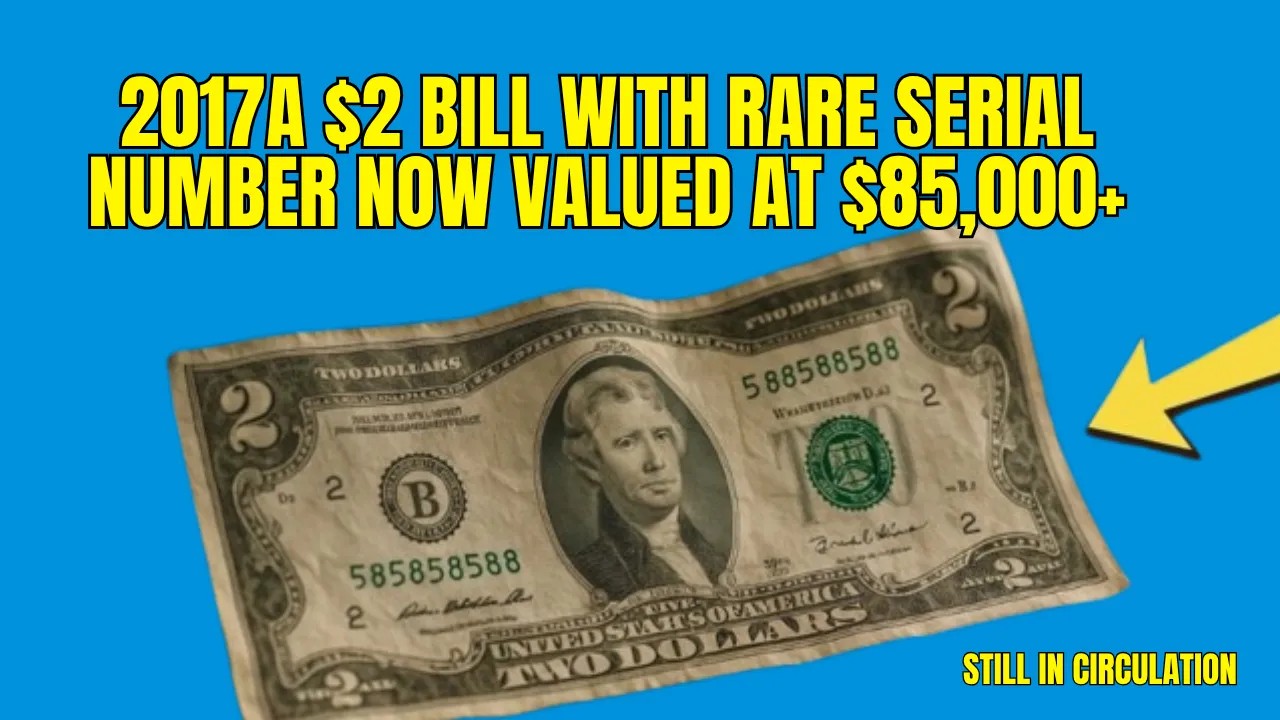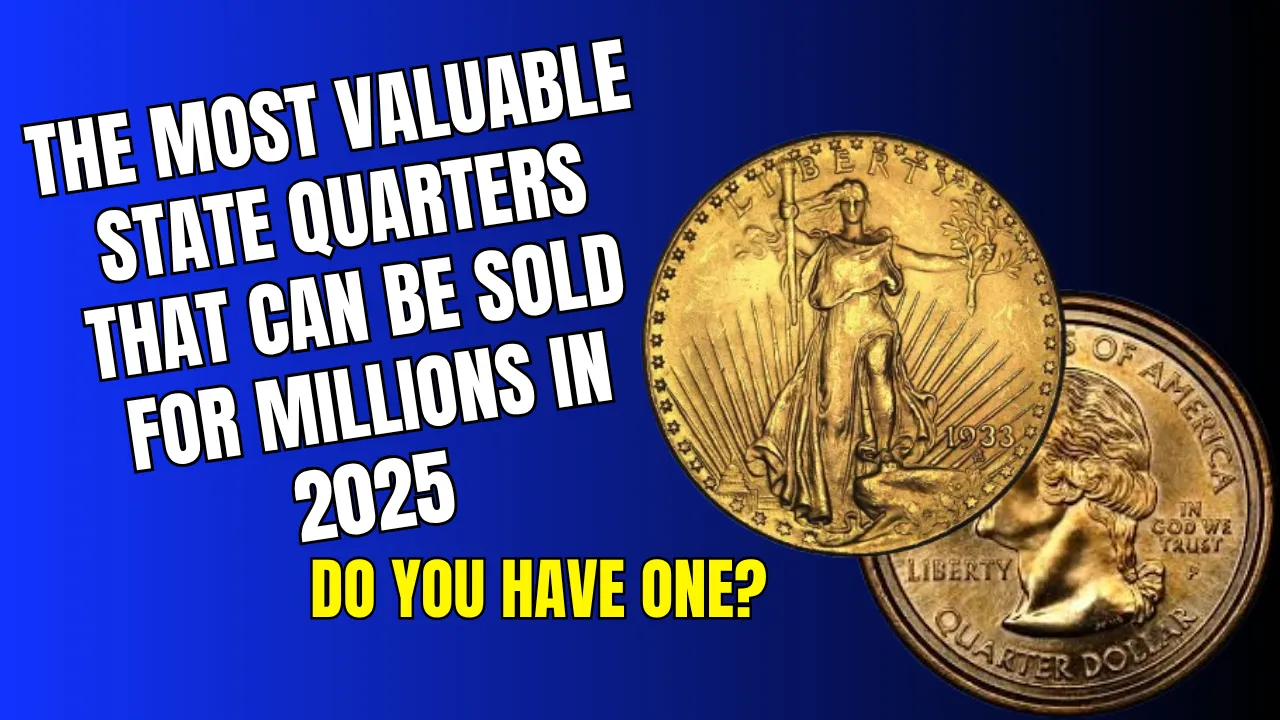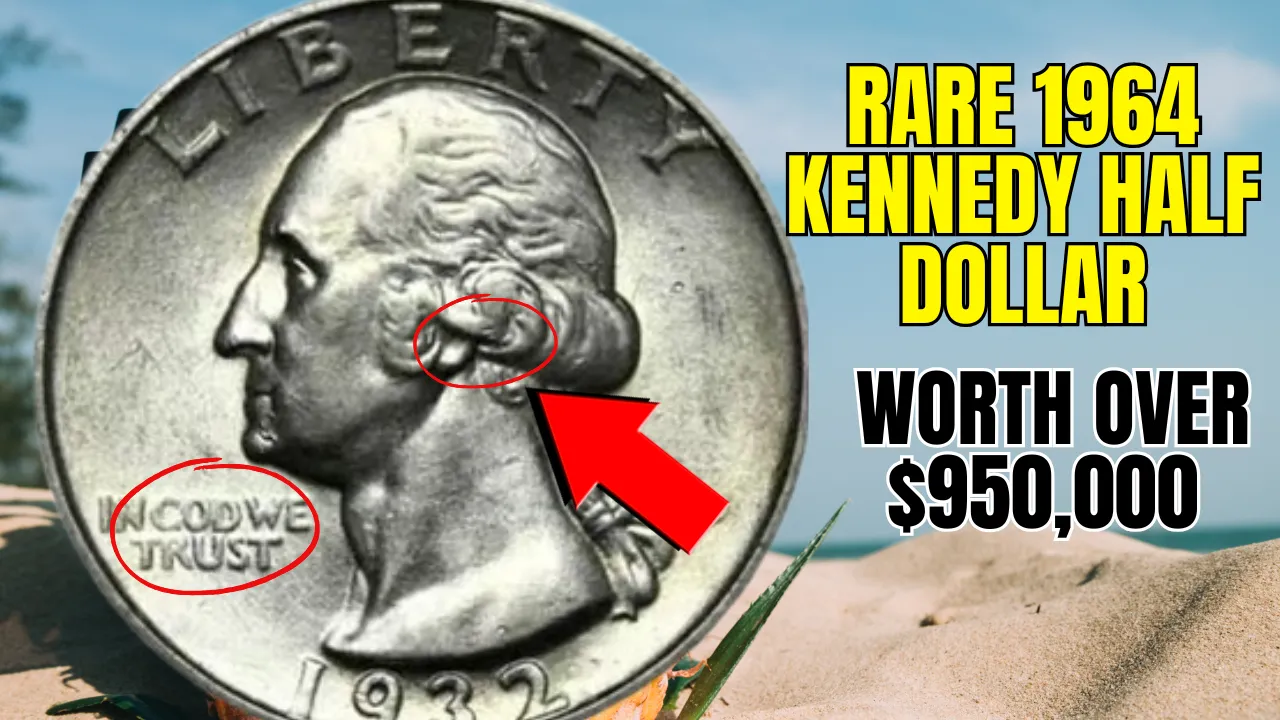The idea that a $2 bill could be worth more than a luxury car sounds like fiction—but it’s not. A 2017A $2 bill, something many would overlook in their wallet, has recently been valued at over $85,000. This isn’t a collector’s item hidden in a vault—it was discovered in regular circulation, handed over like any other piece of change. Its extraordinary value lies in a rare feature that very few notice: the serial number.
What makes this story even more fascinating is the fact that the note is from the relatively modern 2017A series, which is still circulating. This discovery is sparking interest in currency collecting and encouraging everyday people to examine their money more closely.
2017A $2 bill rare serial
At the center of this unexpected find is the 2017A $2 bill rare serial, which features a uniquely patterned or low-serial number that makes it exceptionally valuable. Collectors often seek bills with numbers like 00000001, repeated digits like 88888888, or patterns such as 12344321. These aren’t just novelties—they’re highly prized in the world of currency collecting. Some also look for “star notes,” which include a star symbol, or bills with errors like double prints or misaligned text. When these rare serials appear on newer notes like the 2017A series, especially in crisp, uncirculated condition, they can be worth thousands—or in this case, over $85,000.
Overview Table: Key Information
| Aspect | Details |
| Series | 2017A |
| Serial Characteristics | Low numbers, repeating digits, ladder patterns, or star notes |
| Discovery | Found in regular circulation |
| Estimated Value | Over $85,000 |
| Condition | Near-mint or uncirculated |
| Notable Features | May include printing errors, star symbols, or extremely low serial number |
The Unexpected Value Behind a Common Bill
Most people don’t think twice about $2 bills. They’re real currency but are rarely used in daily transactions, which already gives them an unusual status. But certain print runs, especially those with limited circulation, can dramatically increase a bill’s worth. Add a rare serial number into the mix, and a simple two-dollar note transforms into a collector’s dream.
What’s remarkable here is that the bill wasn’t hidden in a collection. It was passed along like ordinary cash—possibly in a gas station or as change at a store. It serves as a reminder that valuable collectibles aren’t always hidden away—they’re sometimes sitting in your wallet.
What Makes This $2 Bill Worth Over $85,000?
To understand why this particular bill holds such an enormous value, it helps to look at what collectors search for:
- Low Serial Numbers: Anything numbered under 00000100 draws significant interest.
- Repeater Numbers: Examples include serials like 56565656 or 12121212.
- Solid Digits: A serial of all the same number, such as 99999999, is extremely rare.
- Ladder Serials: Numbers that climb or descend in sequence, like 12345678 or 87654321.
- Star Notes: These replace one of the serial’s letters with a star symbol, indicating a reprint due to an error.
- Printing Errors: Notes with printing flaws, like color shifts or misaligned seals, are often worth more.
If a 2017A $2 bill contains even one of these features—and is in excellent condition—it can fetch staggering prices.
Found in Pocket Change?
Perhaps the most exciting aspect of this story is where the bill was found. Unlike rare coins or antique banknotes locked in safes, this valuable piece was discovered in everyday use. It might have been stuffed into a drawer, tucked away with other small bills, or handed out at a retail counter.
This drives home a simple point: the next big find in numismatics might be in your wallet right now. Everyday currency is still capable of surprising even seasoned collectors.
What You Should Look For in $2 Bills
Want to try your luck? Here are some key things to examine on your $2 bills:
- Serial Number: Focus on the numbers first. Check for repeated digits, palindromes (like 1234321), or sequential patterns.
- Star Symbol: If your serial ends in a star, it’s a replacement note, which is instantly more desirable.
- Bill Condition: Notes in near-mint or uncirculated condition will be valued much higher.
- Color or Printing Mistakes: Unusual ink marks, off-center printing, or odd textures may suggest a printing error.
- Series Year: Keep an eye on 2013 and 2017A series notes, as these are more likely to feature modern printing quirks or valuable serials.
Why the $2 Bill Is Getting More Attention
Social media trends, viral collector stories, and a general resurgence in hobby culture have all contributed to renewed interest in the $2 bill. The bill’s unique denomination, combined with low circulation and occasional rare features, makes it appealing to both seasoned collectors and new enthusiasts.
Younger generations are also discovering numismatics, often inspired by stories like this. With the limited print runs of $2 bills and their often-uncirculated status, more people are beginning to see them as both historical artifacts and financial opportunities.
Should You Start Saving Your $2 Bills?
Absolutely. While most $2 bills won’t be worth more than face value, they cost nothing to hold onto. And since rare traits can turn up in surprising places, there’s potential for a significant payoff. Here’s how to get started:
- Create a separate stash: Keep an envelope or small box just for interesting $2 notes.
- Check every new bill: Make it a habit to look closely at the serial numbers before spending.
- Join online groups: Collector forums or Facebook groups often share insights and success stories.
- Use reference guides: Books and websites dedicated to currency values can help you identify what’s worth saving.
- Have your bills graded: If you suspect a bill might be rare, get it assessed by a professional grading service.
Final Thought
The story of the 2017A $2 bill rare serial is a reminder that hidden value often lives in plain sight. A bill that started its life just like any other has now become a collector’s gem—worth more than a brand-new car. In a world where we often overlook small details, this serves as an invitation to slow down and take a closer look.
Next time you receive change, don’t rush to spend it. Inspect your bills, especially those elusive $2 notes. They could be your ticket to a surprising windfall. And if you do find something interesting? Share your story—it might inspire the next great discovery.
FAQs
1. How can I tell if my 2017A $2 bill has a rare serial number?
Look for patterns like low numbers (under 100), repeating digits, palindromes, ladders, or a star symbol next to the serial number.
2. What does a star in the serial number mean?
A star indicates a replacement note, usually due to a printing error. These are rarer and often more valuable.
3. Is it worth saving all my $2 bills?
Not all will be valuable, but it’s smart to set aside those from newer series (like 2013 and 2017A) or those in excellent condition with interesting serials.
4. Where should I get a bill appraised?
Use certified grading services like PMG or PCGS Currency. They offer authentication and value assessments based on market trends.
5. Can I spend a rare $2 bill if I need to?
Yes, all $2 bills are legal tender. But if your note is rare, spending it would likely be a loss compared to its collector value.










